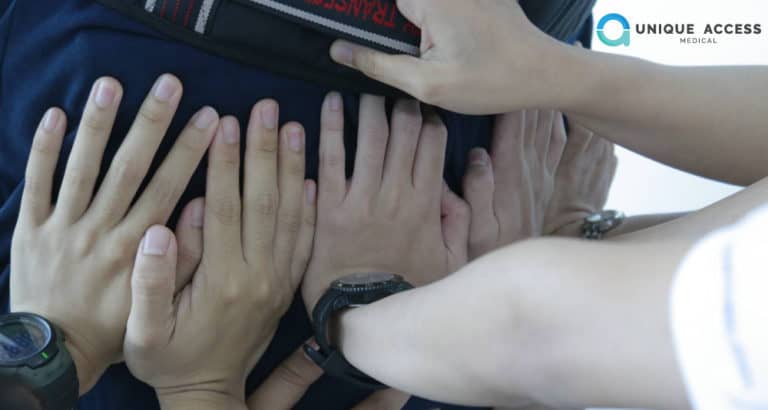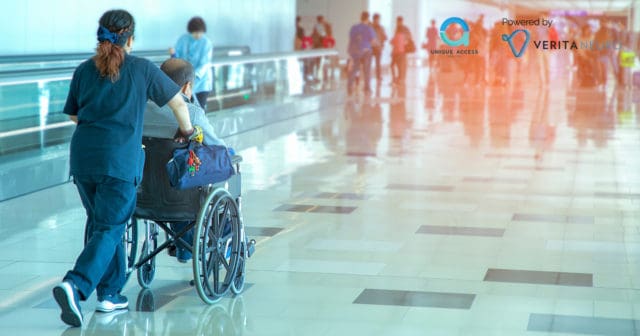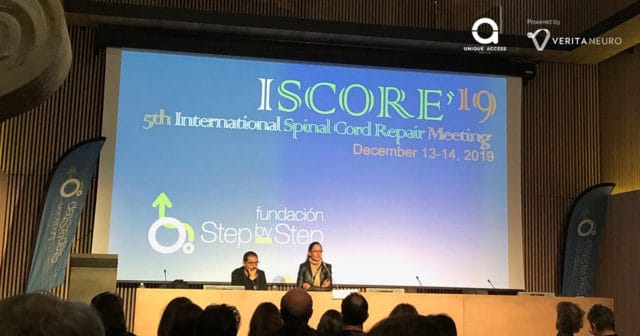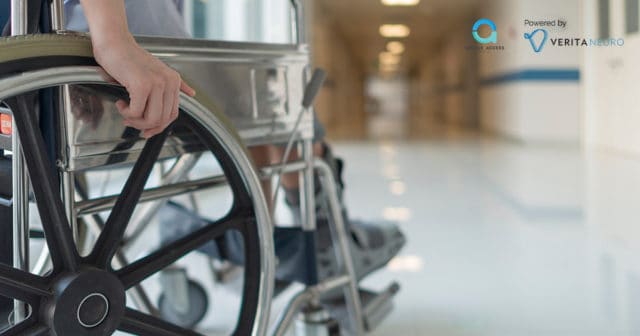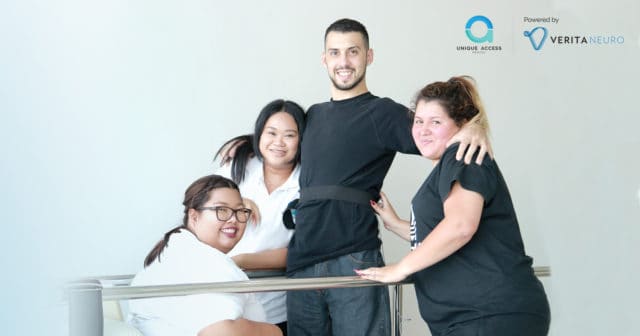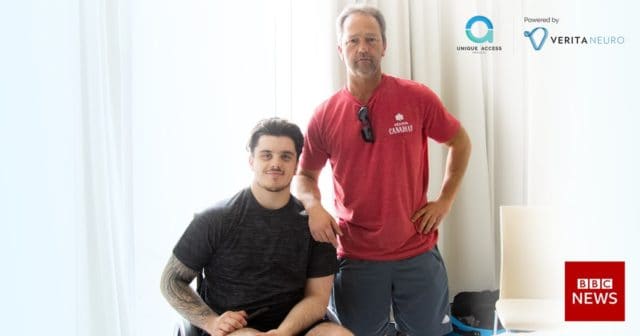Four pairs of hands ardently pushing a Spinal Cord Injury patient as he gathers emotional and physical strength to make history and stand up on his own feet: such scene has become a common sight at the Rehabilitation Centre, a partner of Unique Access Medical.
Throughout the years, Unique Access Medical has witnessed breakthrough changes to our Spinal Cord Patients’ conditions- be it an ability to take assisted steps, an improvement in voluntary movements in the legs, an increase in the muscle strength and mass. Whilst Epidural Stimulation Procedure plays an extremely essential role in these recoveries (as the stimulating device redirects the amplified electrical current to areas below the injury and allows such improvements), the efforts of Physiotherapists, or the people behind these phenomenal changes, should and must not be overlooked.
In fact, Unique Access’s Spinal Cord Injury patients spend the majority of their time from a 35-day-long Epidural Stimulation Protocol on Physiotherapy alone. This extensive rehabilitation is performed by a group of highly experienced and passionate Physiotherapists, whose jobs are not only to rehabilitate and restore our patients’ health to their fullest potential, but also to care for them.
The work of Physiotherapists is, indeed, a challenging one- and even more so in this case. The physiotherapy sessions we offer for Spinal Cord Injury patients here utilise an advanced technology of a Mapping Device, making it unique from normal physiotherapy found elsewhere. With the electrical current triggered by the Epidural Stimulating device, Mapping device is used to discover the most suitable programs and frequency at which the patient’s muscles respond best to and which is the most suitable to promote voluntary movements. It is especially designed and implemented so that Spinal Cord Injury patients are able to achieve the best results possible.
This, however, despite long years of training, is easier said than done. Each Spinal Cord Injury patient suffers from a different level of injury, meaning the location of the functional muscles also vary from person to person. Nevertheless, the success of which could mean that the patient’s recovery process is geared towards the desired direction. To the Physiotherapists, witnessing a T5 Spinal Cord Injury patient finally getting up on his own feet, or a C5 Spinal Cord Injury who has spent as long as 23 years in a wheelchair move his legs again are everything worth fighting for.

